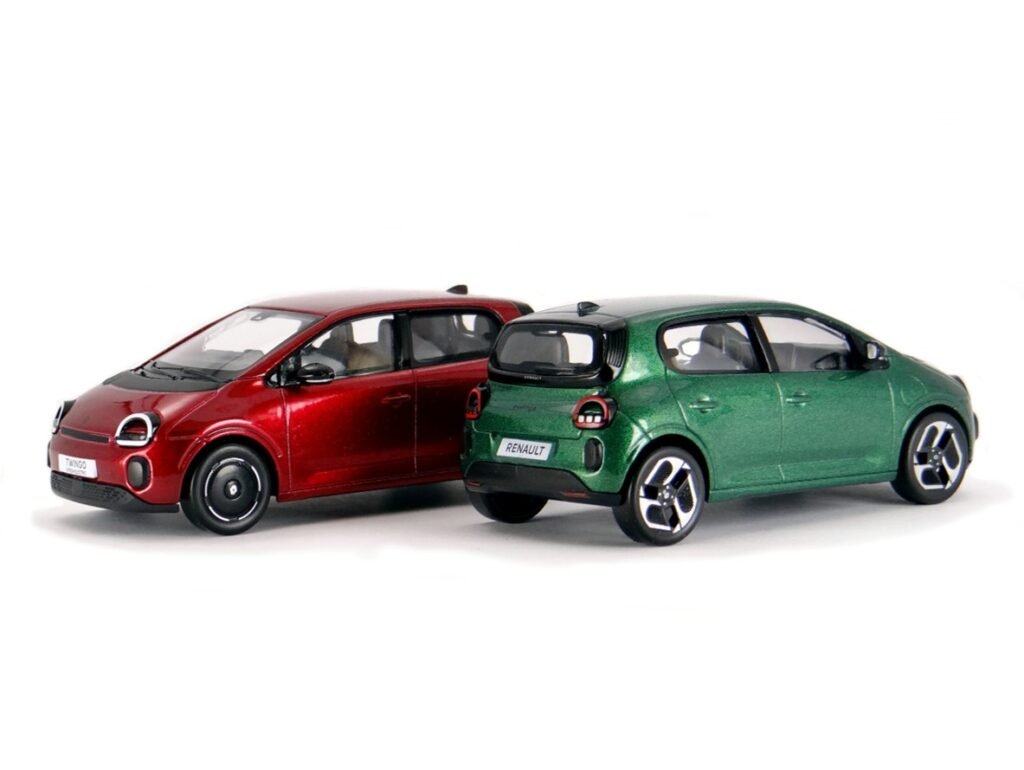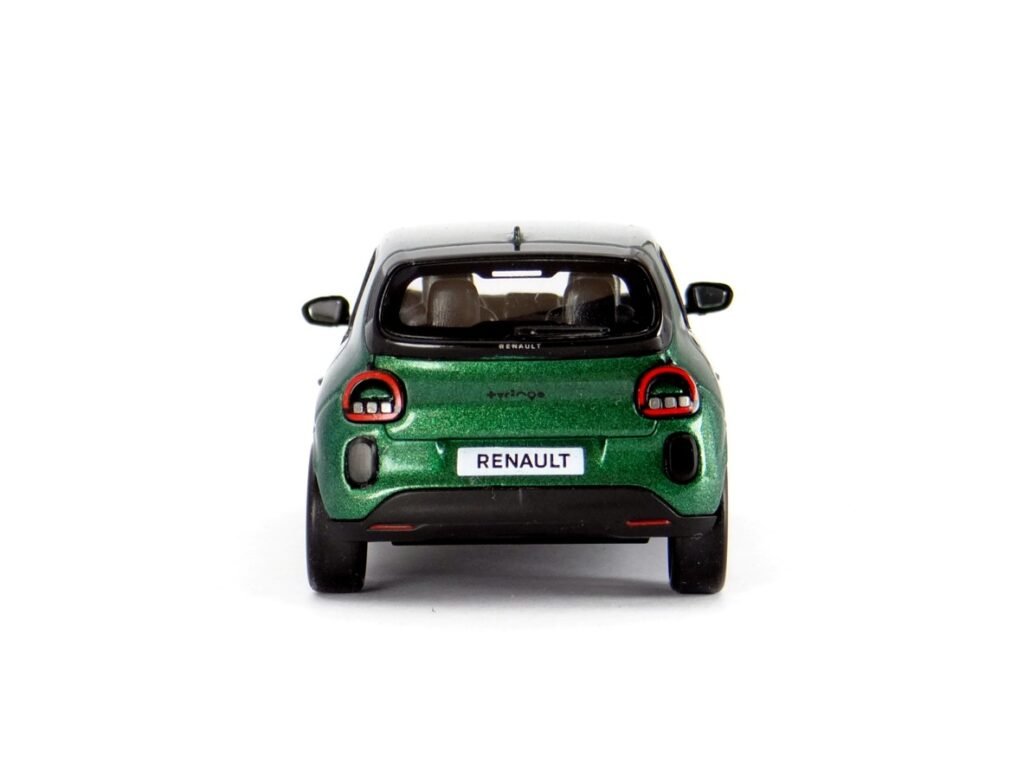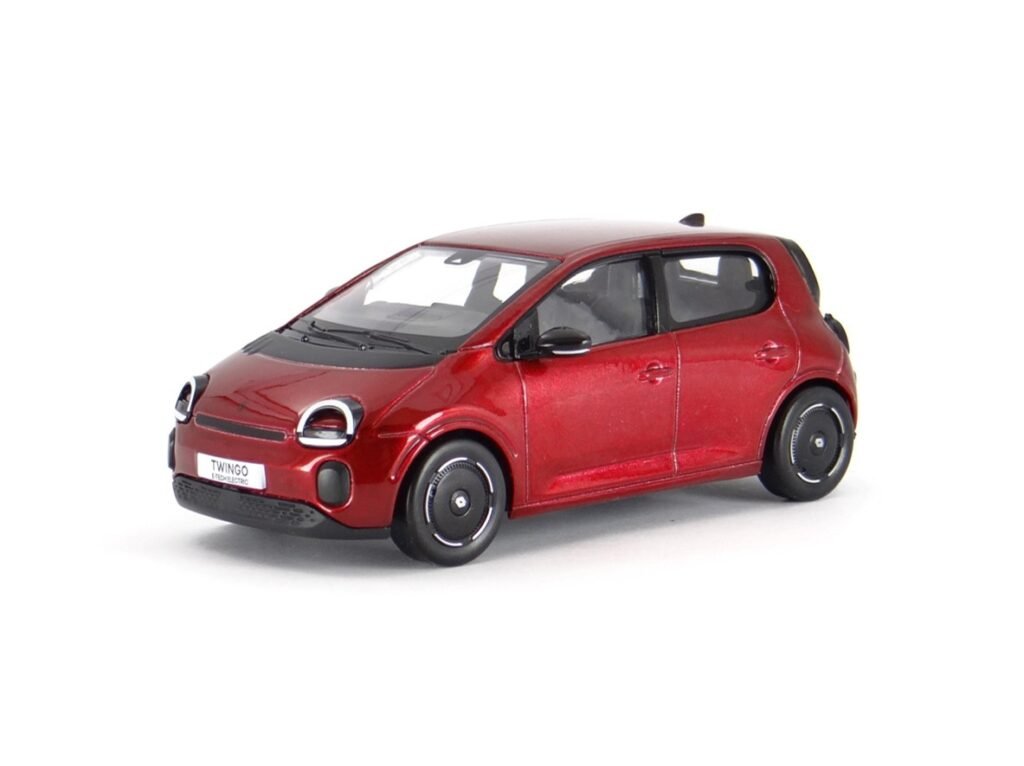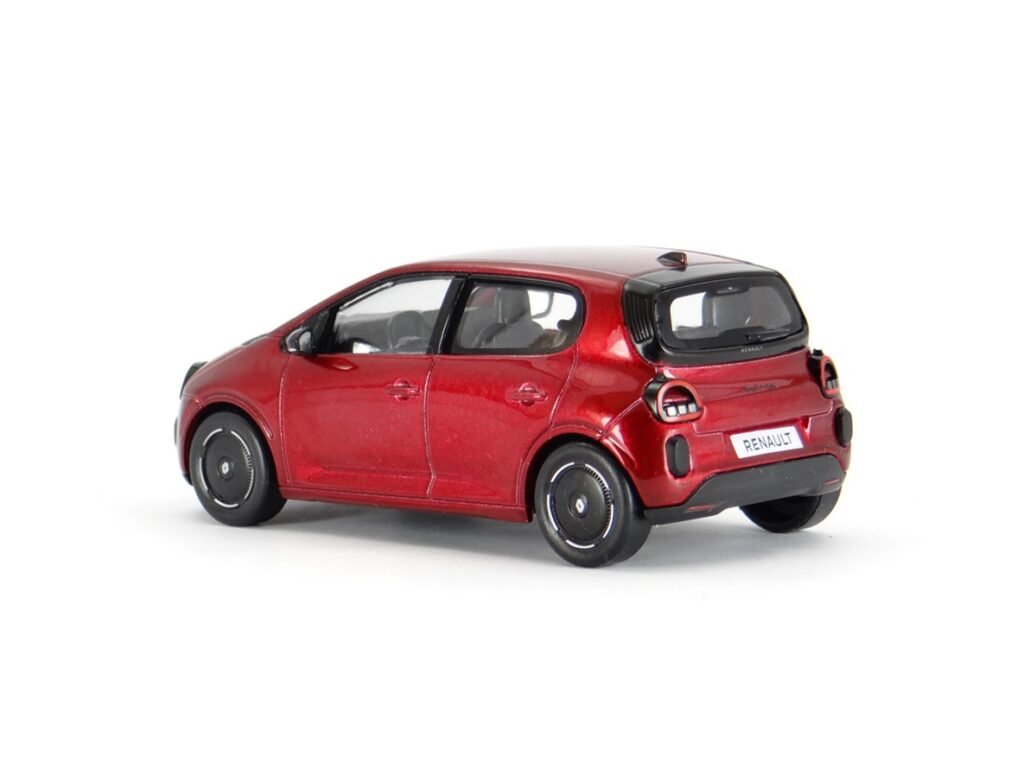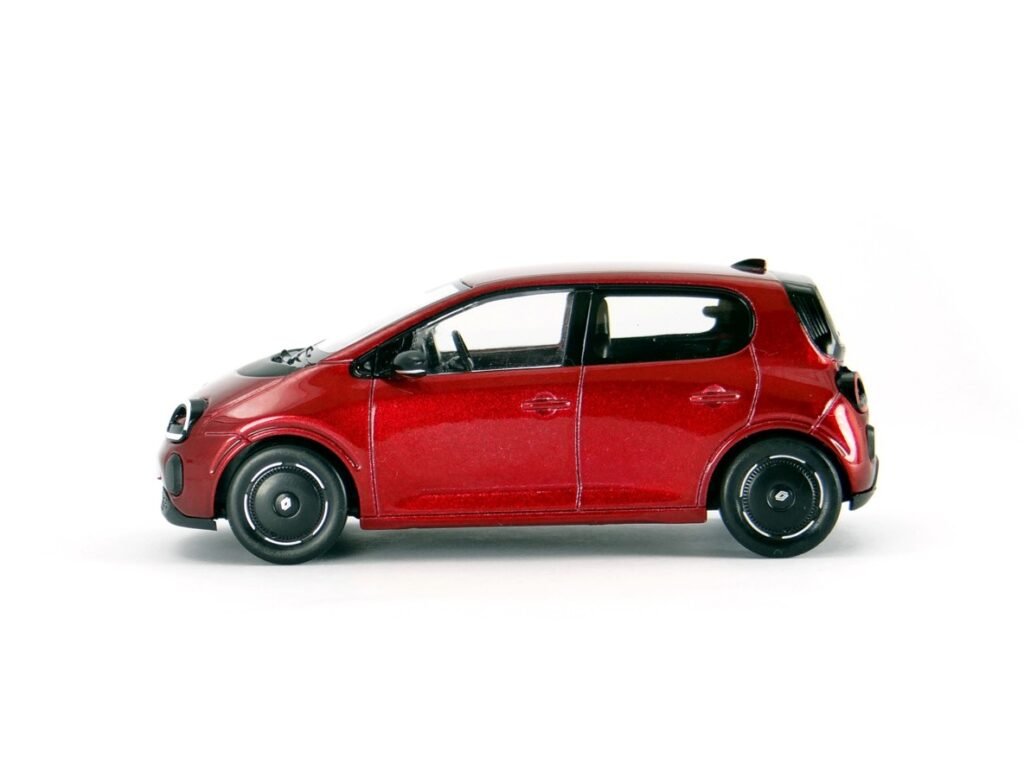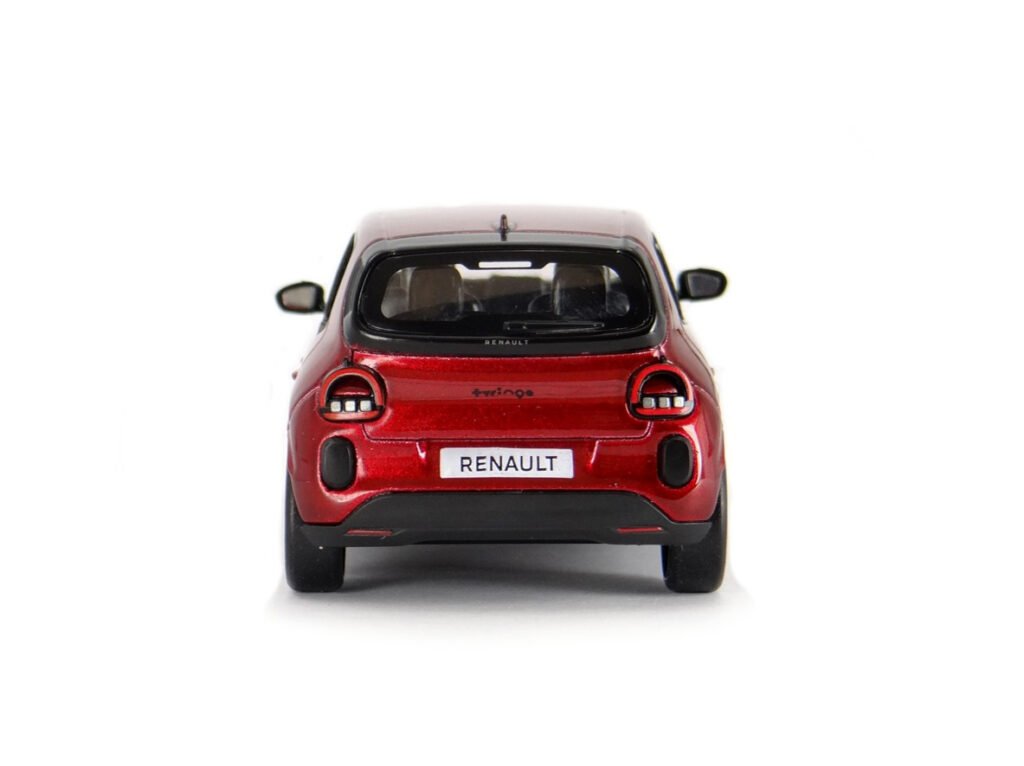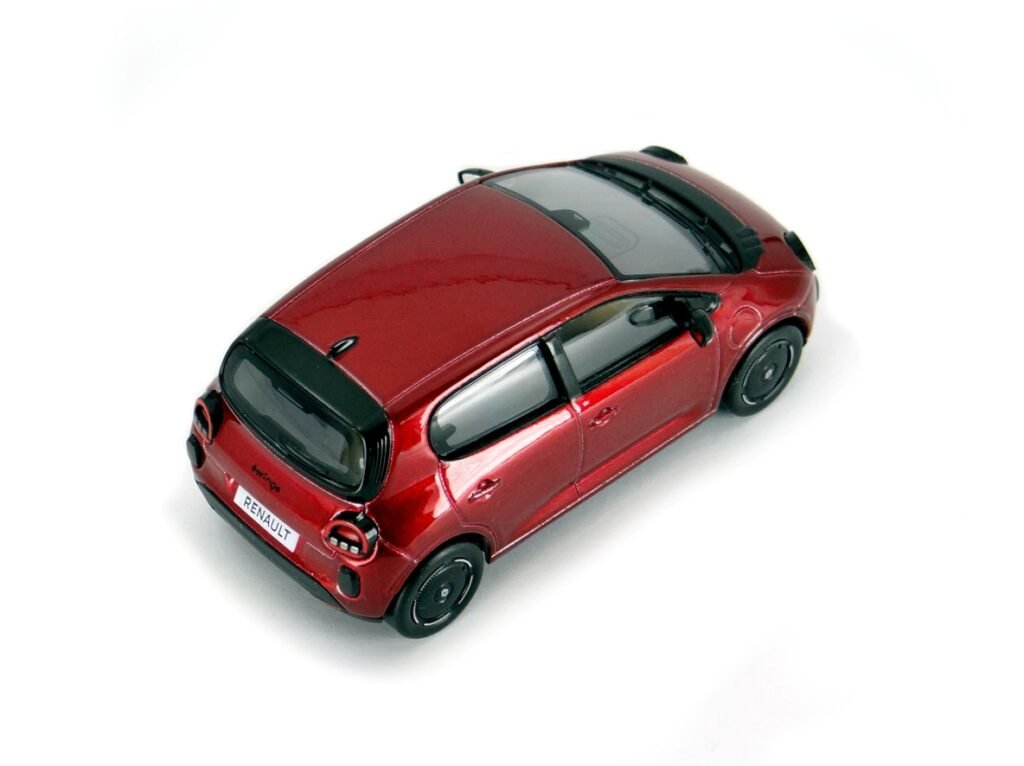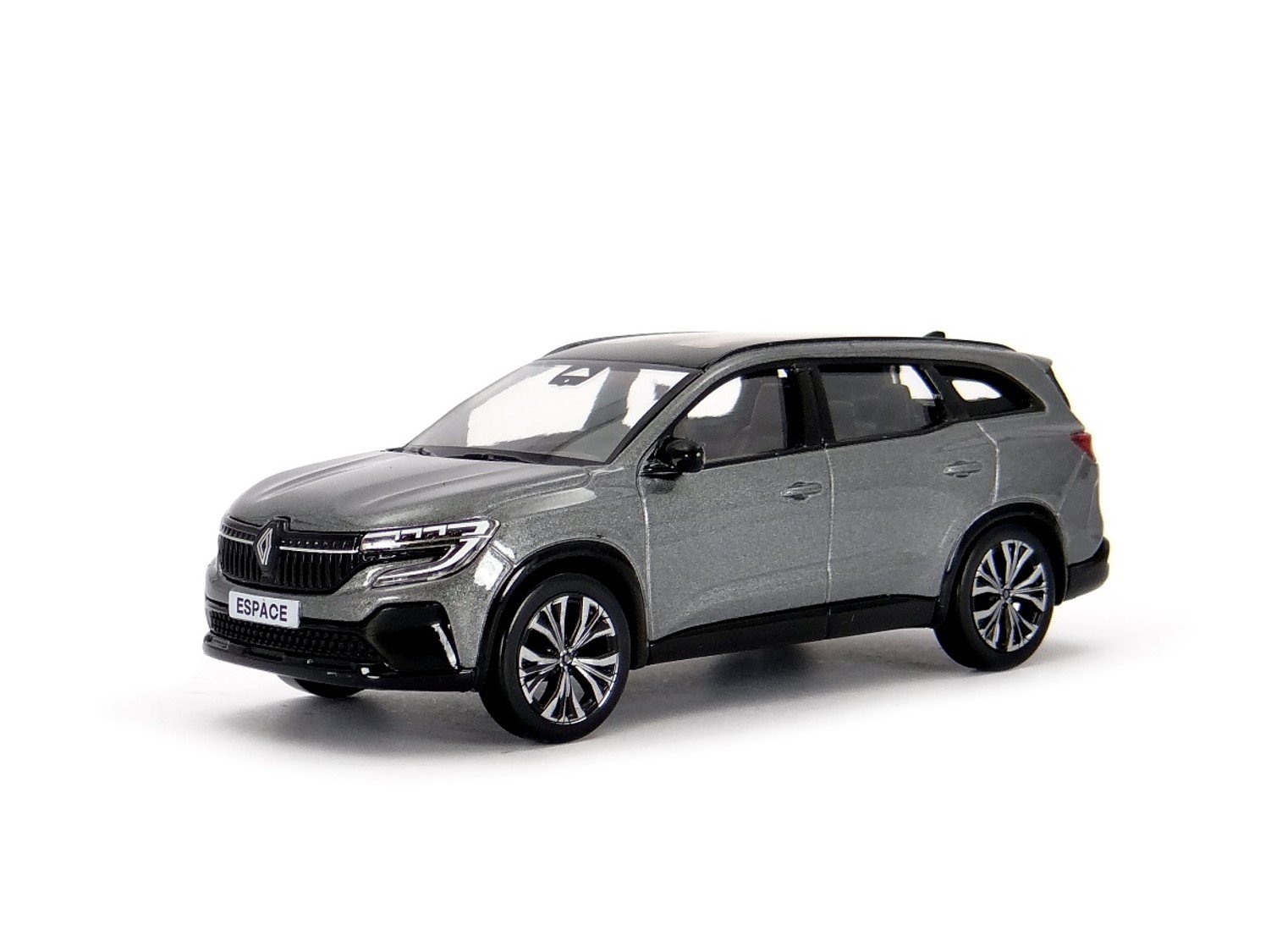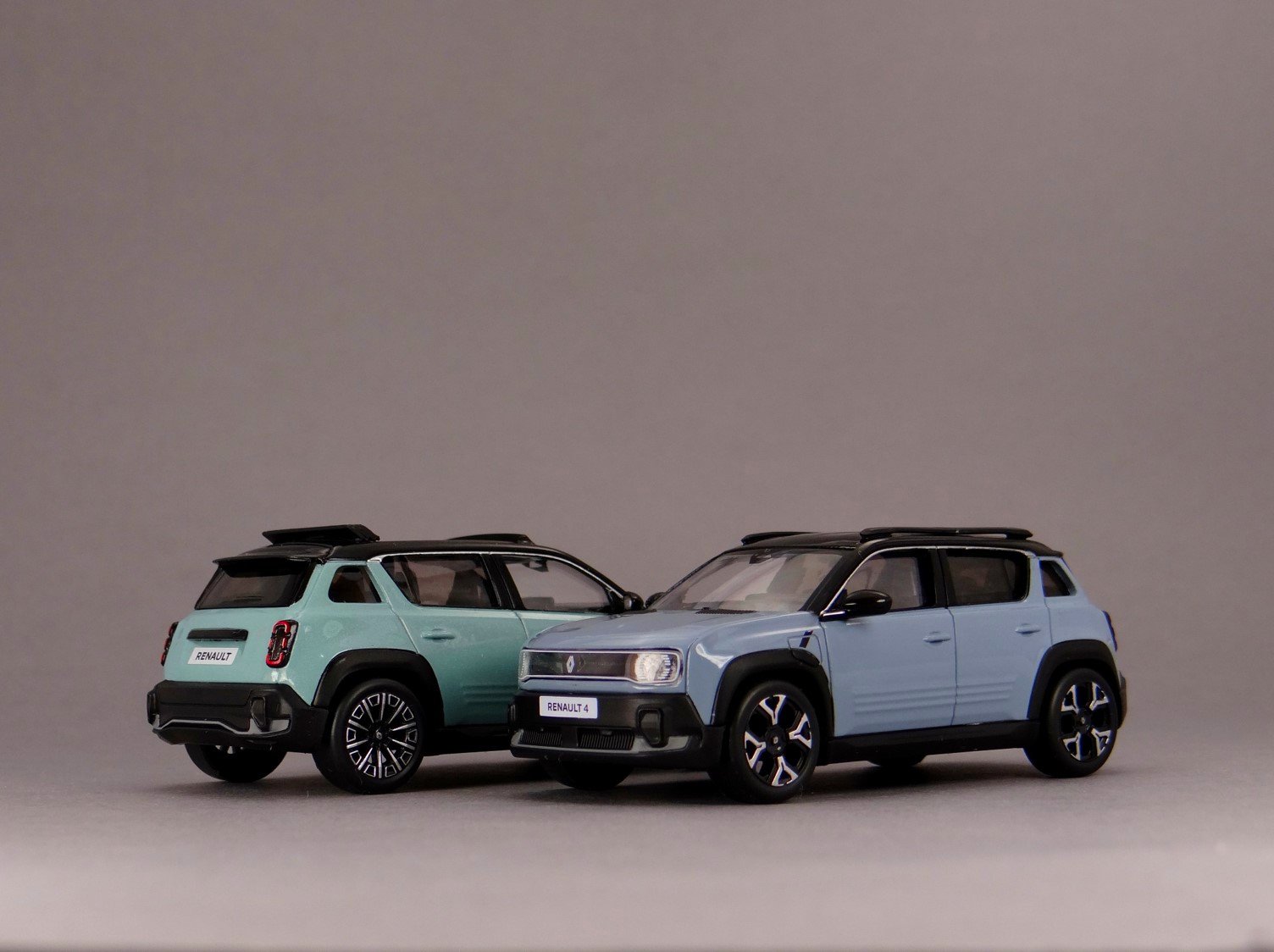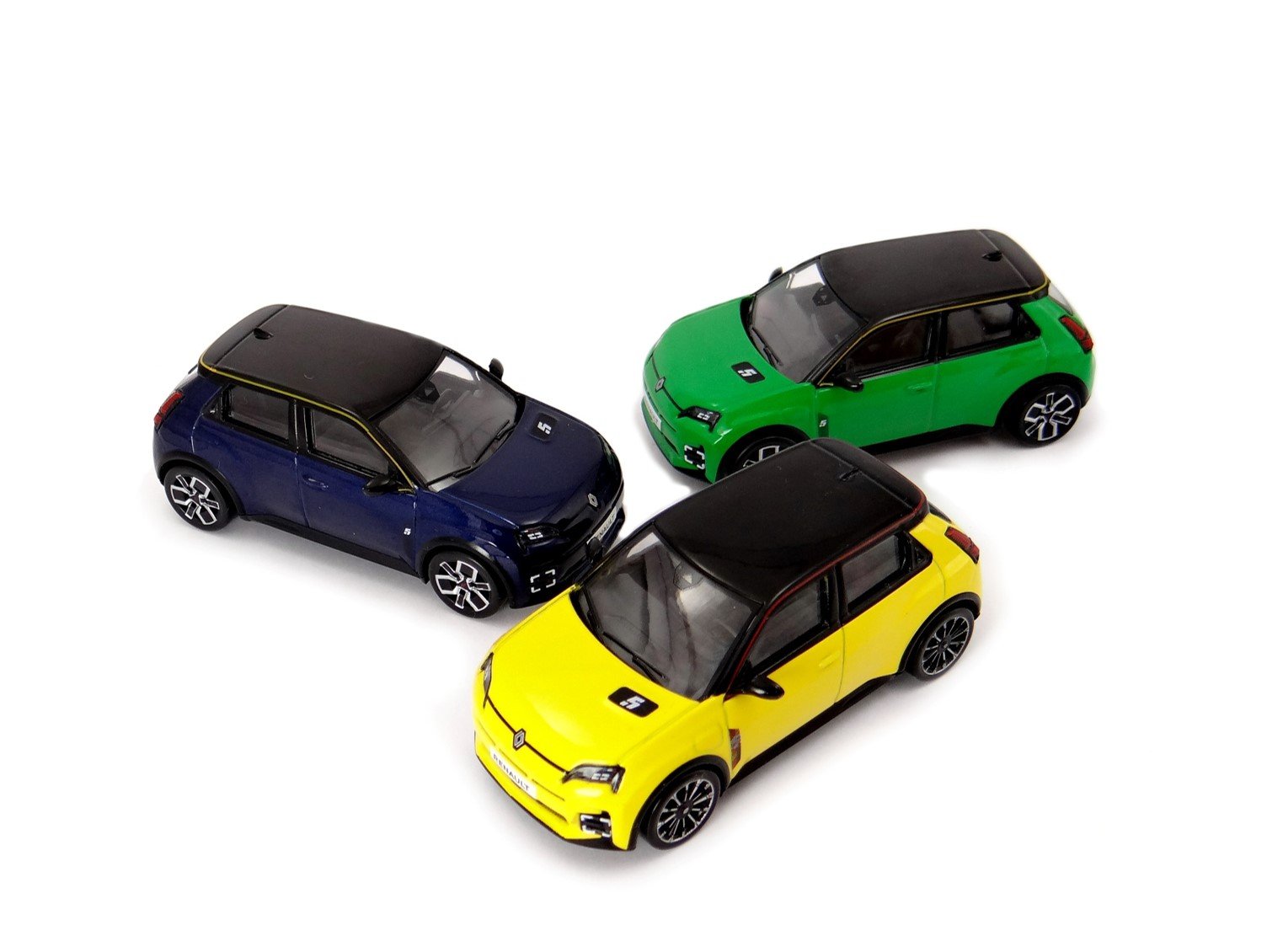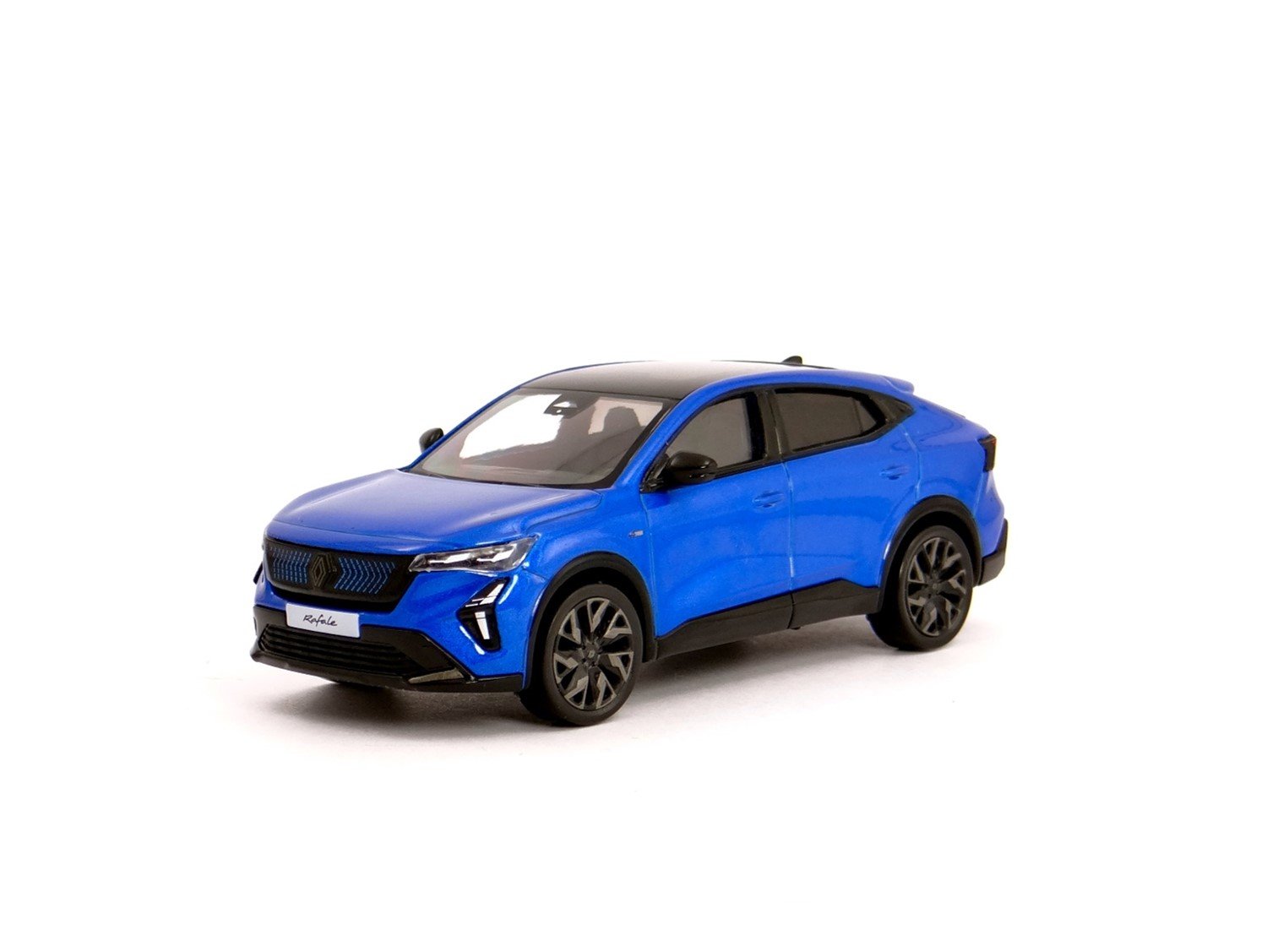Francuska firma wskrzesza swoją ikonę lat.90 i powraca do segmentu A. Nowe Renault Twingo E-Tech to nie kolejny pospolity SUV, a mega uroczy i wesoły miejski hatchback. Tak jak jego protoplasta. Fani już są zachwyceni.
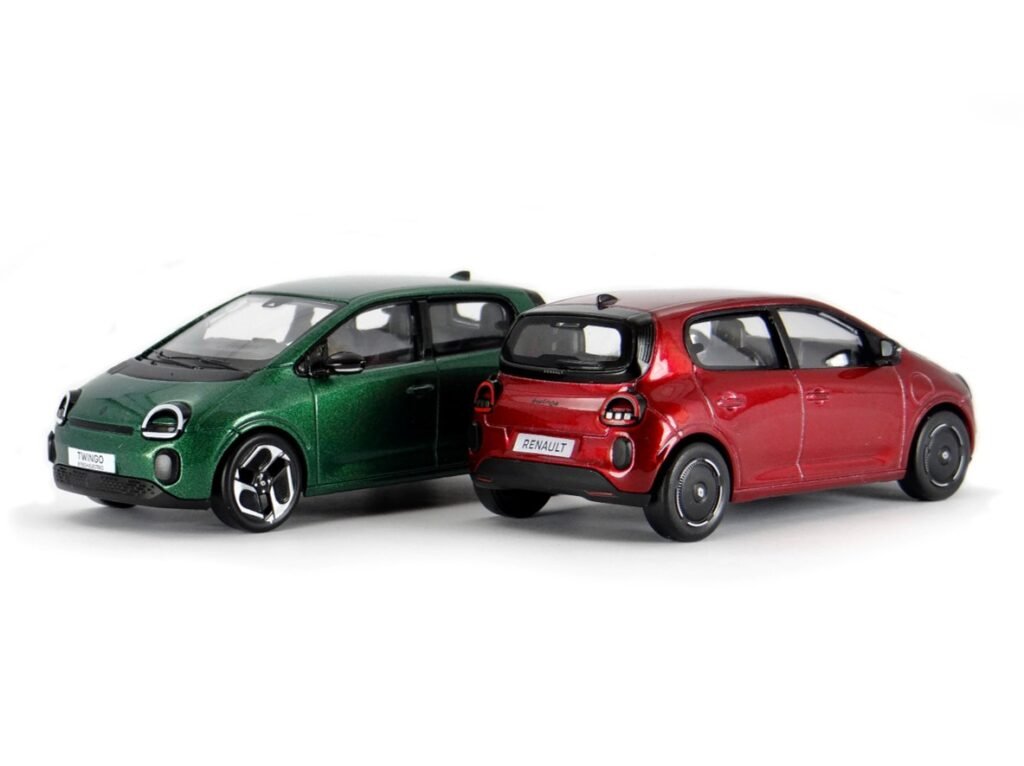
Renault konsekwentnie realizuje swoją strategię. Po bardzo ciepło przyjętych modelach 5 E-Tech i 4 E-Tech, przyszła pora na najmniejsze i najtańsze elektryczne “dziecko” neo-retro, czyli Twingo. Samochód został zapowiedziany prototypem Twingo Legend w 2023 roku i już wtedy można było się spodziewać, że wersja produkcyjna nie będzie się od niego znacząco różniła. Przypuszczenia potwierdziły się 6 listopada, podczas światowej premiery nowego Twingo na Champs-Élysées w Paryżu.
Renault Twingo E-Tech nie sposób pomylić z żadnym innym samochodem. Jego wygląd ewidentnie nawiązuje do pierwowzoru z 1992 roku. Bąbelkowate jednobryłowe nadwozie, krótka maska z trzyczęściowym wlotem powietrza i charakterystyczny kształt przednich świateł – to bez wątpienia Twingo. Oczywiście, styl lat 90. zgrabnie przełożono na współczesne realia.
Przede wszystkim, projektanci zrezygnowali z trzydrzwiowego nadwozia, na rzecz znacznie praktyczniejszego pięciodrzwiowego. W tym procesie niestety zawieruszyły się gdzieś oryginalne klamki, zarówno te z prototypu jak i z pierwszego Twingo. Nowe Twingo ma najzwyklejsze możliwe klamki. Może i są praktyczne, ale też bardzo nudne.
Zupełnie nienudne i znacznie ciekawsze od oryginału są za to przednie i tylne światła LED. Zachowując rozpoznawalny kształt z pierwowzoru, stały się świetnym kawałkiem nowoczesnego designu. Dodatkowo, te wyłupiaste oczka wesoło pozdrawiają przechodniów i potencjalnych nabywców, mrugając i pulsując po włączeniu.
Metamorfozę przeszedł też charakterystyczny trzyczęściowy wlot powietrza na masce. Teraz to atrapa, będąca właściwie tylko ozdobą. Jedynie jej środkowa część pełni jakąś funkcję – schowano tam wlew płynu do spryskiwaczy.

Ukłonem w stronę pierwszego Twingo jest też gama kolorów. Tak jak w przypadku pierwowzoru, na początku do wyboru są tylko cztery: zielony, czerwony, żółty i niebieski.
Wnętrze Renault Twingo E-Tech wykorzystuje ten sam podstawowy schemat co Twingo 1992. Mieści cztery osoby, a oddzielne dwa tylne fotele można niezależnie przesuwać i składać, co pozwala zarządzać przestrzenią zależnie od potrzeb. Ogólnie jednak, kabina mocno różni się od oryginału. To akurat niekoniecznie jest wadą – projekt trzeba było zaadaptować do współczesnych potrzeb. Mamy więc 7-calowy elektroniczny wyświetlacz i 10-calowy dotykowy ekran, a cały pokładowy system OpenR Link oparto na technologii Google, tak jak w innych nowych Renault.
Szczęsliwie, w kabinie znajdziemy też kilka detali nawiązujących do pierwszego Twingo: duży, wyłupiasty przycisk świateł awaryjnych, kolorowe wstawki na desce rozdzielczej i boczkach drzwiowych, czy dywaniki w kolorowe wzory.
Co ciekawe, projektanci chcieli żeby wnętrze było jeszcze bardziej kolorowe, ale ostatecznie postawili na stonowane barwy. Jak powiedział szef biura stylizacyjnego Renault, Laurens van der Acker, winić za to można…Niemców. Niemieccy klienci wolą bowiem spokojniejsze kolory, a że niemiecki rynek będzie jednym z kluczowych, stąd decyzja o stonowanej palecie barw. Niejako w zamian, projektanci przygotowali wiele opcjonalnych kolorowych, designerskich dodatków które trochę bardziej urozmaicą wnętrze.
Technicznie, Renault Twingo E-Tech jest spokrewnione z modelami 5 E-Tech i 4 E-Tech. Bazuje na skróconej wersji użytej w nich platformy AmpR Small. Aby obniżyć koszty, zmieniono również wielowachaczową konstrukcję tylnego zawieszenia, na rzecz prostej belki zaadaptowanej z Captura. W obniżaniu kosztów pomaga też wykorzystanie baterii LFP chińskiej firmy CATL. Twingo to pierwsze Renault które skorzysta z takiej baterii, zamiast znacznie droższych ogniw z niklem i kobaltem. Zastosowana technologia pozwoliła obniżyć koszty produkcji o ok. 20 procent.
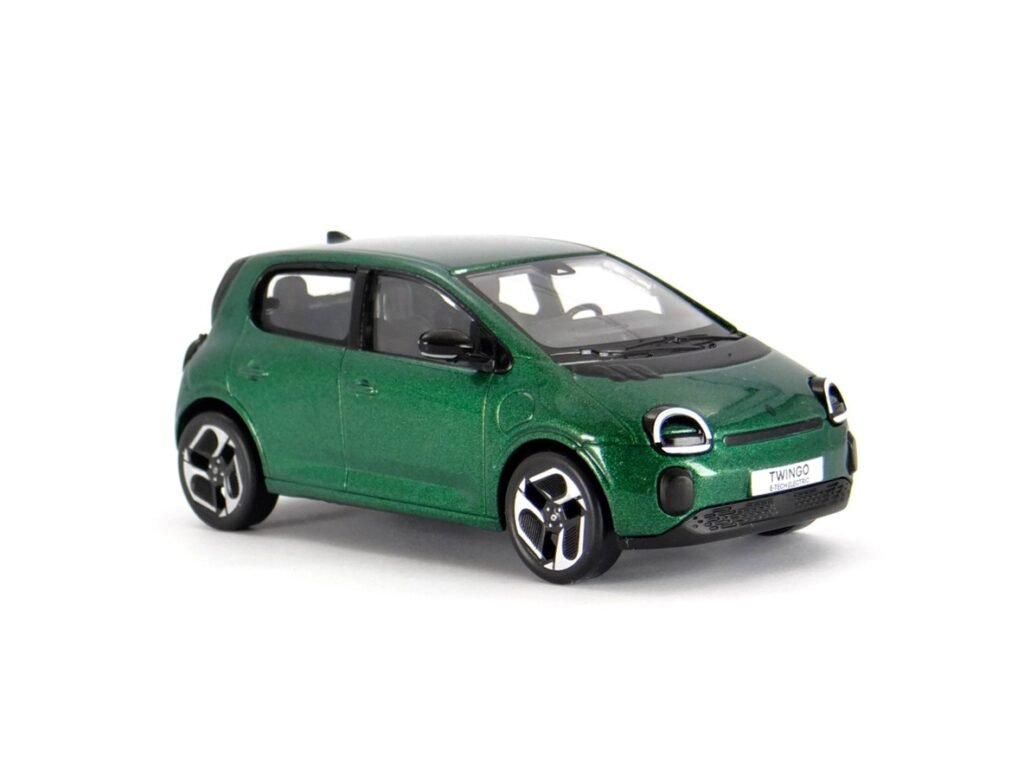
Jako że Renault Twingo E-Tech ma być podstawowym elektrykiem w gamie producenta, dostępne będzie tylko w jednym wariancie napędu. To bateria o pojemności 27,5 kWh połączona z motorem o mocy 82 KM. Auto z takim zestawem rozpędza się do 130 km/h, a prędkość 100 km/h osiąga po 12,1 s od startu. Zasięg WLTP określono na 263 km. To niewiele, ale Renault podeszło do tego bardzo pragmatycznie. Twingo jest w końcu tylko samochodem miejskim, a w miastach nikt większego zasięgu nie potrzebuje. Jeśli ktoś chce pokonywać dłuższe dystanse, musi wybrać inne auto z gamy producenta.
Z Twingo E-Tech, Renault chce udowodnić, że wie jak robić małe, przystępne cenowo elektryki. Z ceną startową poniżej 20 tys. euro, będzie jednym z najtańszych elektrycznych modeli na rynku. Konkurencja w klasie na razie nie jest bardzo duża, ale będzie szybko rosła. Największe zagrożenie dla znanych marek stanowi oczywiście nadchodząca fala tanich, chińskich aut, która może zapełnić europejskie ulice. Dlatego też, Francuzi musieli dzisłać szybko. Według Renault, jest to najszybciej stworzony model w historii firmy – proces projektowania zajął podobno tylko 100 tygodni.
Renault zrobiło co mogło, by zachęcić nabywców do wybrania ich oferty. Auto wzbudza wielką sympatię, ale czy to wystarczy? Potencjał na sukces jest ogromny, ale dla wielu elektryczny napęd jest nie do zaakceptowania. Woleli by wersję spalinową, ale ta na razie jest mało prawdopodobna.
Seryjna produkcja ruszy w przyszłym roku w słoweńskiej fabryce w Novo Mesto. Wtedy przekonamy się czy Twingo, tym razem elektryczne, ponownie oczaruje Europę.
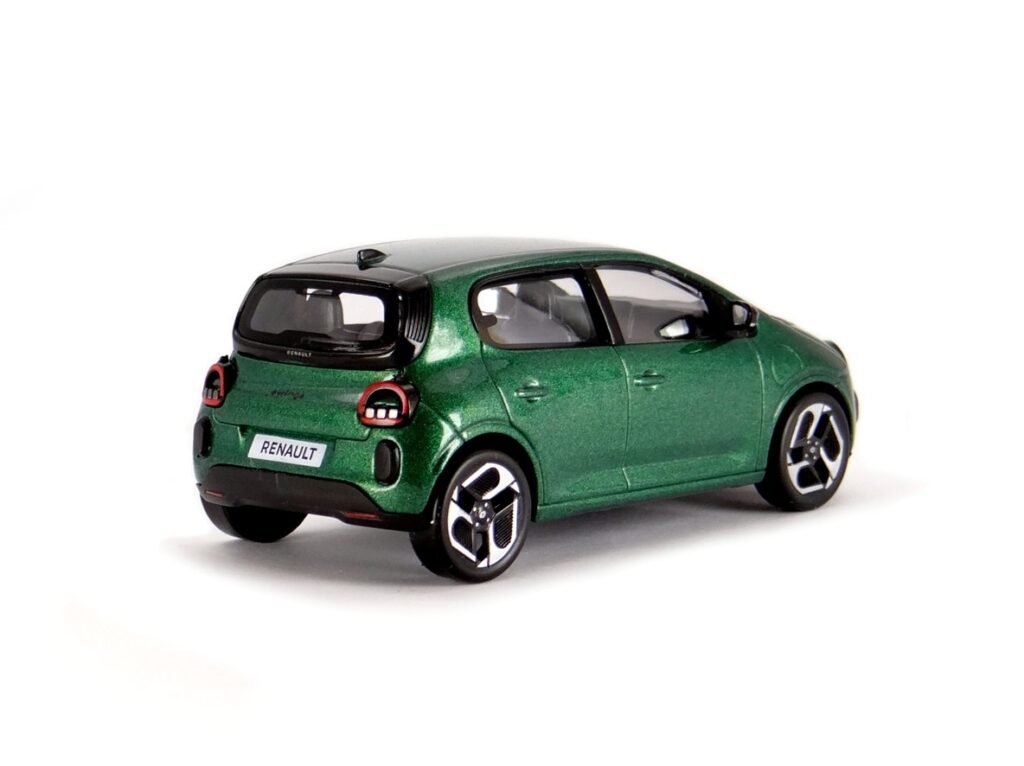
O miniaturze – Renault Twingo E-Tech
Zdaje się, że ostatnio to nowy zwyczaj. Kiedy Renault oficjalnie prezentuje nowy model, tego samego dnia na stronie Renault Originals pojawia się jego miniaturka. Renault Twingo E-Tech ewidentnie podążyło tym schematem. Stąd, 6 listopada w sprzedaży pojawiły się dwa modele w skali 1/43 produkcji Noreva: zielony Absolu w bogatszej wersji Techno i czerwony Absolu w bazowej wersji Evolution.
Tego samego dnia wszedłem na stronę by kupić nowy wypust. Okazało się jednak, że czerwony model już w pierwszym dniu sprzedaży był niedostępny! Chciałem kupić oba, więc musiałem poczekać kilka dni, aby firma uzupełniła stan magazynów.
W końcu, modele do mnie dotarły. Autka pochodzą z nowych form Noreva z poprawionymi bocznymi lusterkami, co znacznie poprawia ich wygląd. Jak zwykle, nie można mieć żadnych zastrzeżeń do lakieru – jest idealny w obu modelach.
Moim zdecydowanym faworytem jest tutaj zielone Twingo. Ten odcień świetnie pasuje do kształtów samochodu i bardzo go ożywia. Z wyglądu przypomina mi żabkę, ale to absolutnie nie wada – autko wygląda uroczo!
Owszem, jest tutaj kilka niedociągnięć typowych dla wielu wypustów Noreva, takich jak plastikowe oponki, brak odwzorowania hamulców, czarne wnętrze czy brak lusterka wstecznego. Tutaj jednak, o dziwo, tak bardzo mi to nie przeszkadza.
Ja z niecierpliwością czekam na Renault Twingo E-Tech w skali 1:18, a tymczasem zapraszam do obejrzenia zdjęć modeli w skali 1:43! Jak zawsze, pamiętajcie też o śledzeniu MiniAutomobili na Instagramie i Facebooku!
*** ENGLISH ***
The French company is reviving its 90s icon and returns to the A-segment. The new Renault Twingo E-Tech isn’t just another generic SUV, but a super cute and cheerful city hatchback — just like its ancestor. Fans are already delighted.
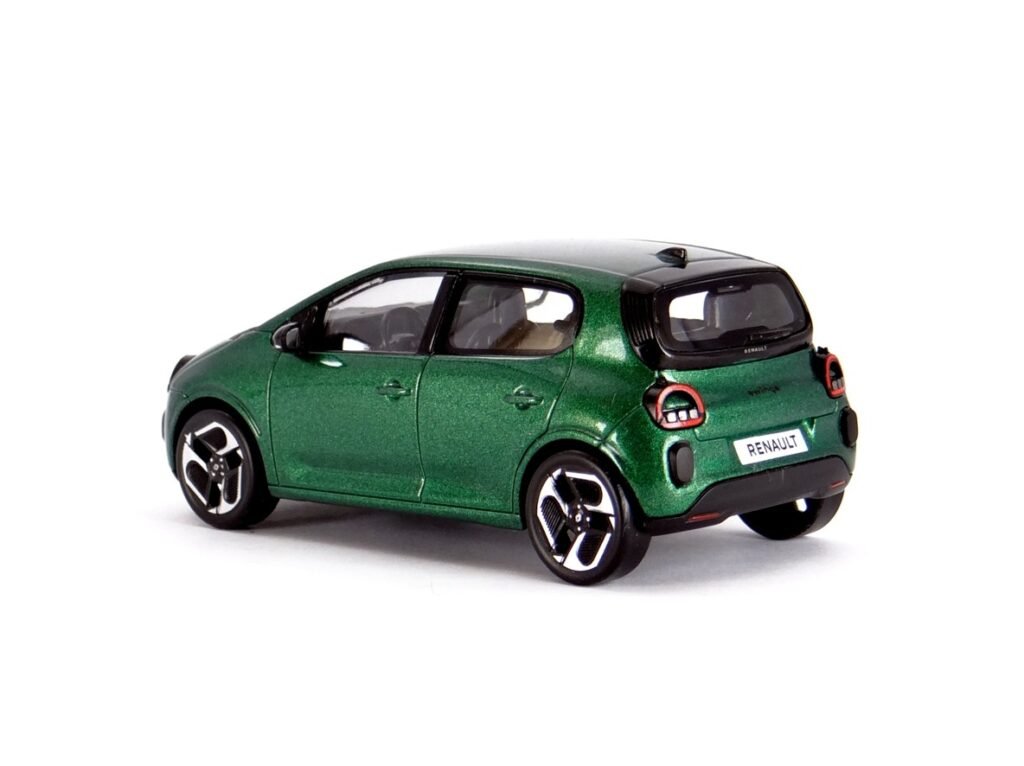
Renault is consistently putting its strategy into life. After the very well-received 5 E-Tech and 4 E-Tech models, it’s time for the smallest and cheapest neo-retro electric baby, the Twingo. The car was previewed by the Twingo Legend prototype in 2023 and it was clear that the production version likely wouldn’t differ much from it. These assumptions were confirmed on November 6, during the world premiere of the new Twingo on the Champs-Élysées in Paris.
You can’t confuse the Renault Twingo E-Tech with any other car. Its looks clearly refer to the original model from 1992. The bubbly one-box body, the short hood with a three-part air intake and the distinctive shape of the front lights — it’s unmistakably a Twingo. Of course, the 90s style has been neatly adapted to modern standards.
First of all, the designers abandoned the three-door body in favor of a much more practical five-door layout. Unfortunately, in this process the original door handles — both those from the prototype and from the first Twingo — got lost somewhere. The new Twingo has the most ordinary handles possible. They may be practical, but they’re also very boring.
The front and rear LED lights, however, are anything but boring and are much more interesting than the original ones. While retaining the recognizable shape of the first model, they became a great piece of modern design. What’s more, these bulging little eyes cheerfully greet pedestrians and potential buyers, blinking and pulsing when activated.
The characteristic three-part air intake on the bonnet has also undergone a transformation. It is now a fake element, serving essentially as decoration. Only its middle section has any real function — it hides the windshield washer fluid filler.
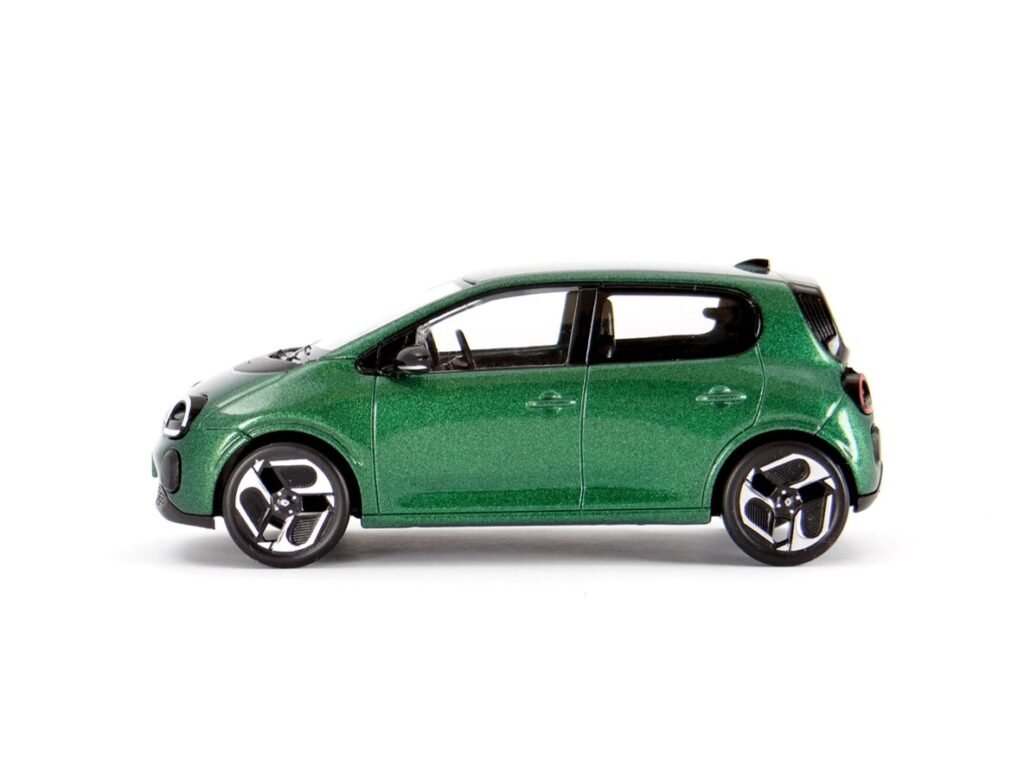
The car’s colour range is yet another nod to the first Twingo. Just like in the original, you can initially only choose from four shades: green, red, yellow and blue.
Inside, the Renault Twingo E-Tech uses the same basic lay-out as the 1992 Twingo. It seats four and the two rear chairs are capable of sliding, reclining as well as folding independently, which allows you to manage space as needed. Overall however, the cabin differs quite a lot from the original. This isn’t necessarily a bad thing though – the design had to be adapted to modern requirements. Thus, we get a 7-inch digital display screen and a 10-inch touchscreen, all using the OpenR Link system based on Google technology, same as in other new Renaults.
Fortunately, the cabin features several details that reference the first Twingo: a large, dome-shaped hazard light button, colorful inserts on the dashboard and door panels and floor mats with colorful patterns.
Interestingly, the designers wanted the interior to be even more colourful, but ultimately they opted for more subdued tones. The head of Renault’s design department, Laurens van den Acker, explained that… the Germans can be blamed for this. German customers prefer calmer colours, and since the German market will be one of the key ones, the decision was made to use a restrained colour palette. To off-set this, the designers prepared a range of colorful, designer extras, to make the interior a bit more interesting.
Mechanically, the Renault Twingo E-Tech is related to the 5 E-Tech and 4 E-Tech models. It is based on a shortened version of the AmpR Small platform used in both cars. To reduce costs, the multi-link rear suspension was replaced with a simple torsion beam adapted from the Captur. Cost reduction is also helped by the use of LFP batteries from the Chinese company CATL. The Twingo is the first Renault to use this type of battery instead of the much more expensive nickel- and cobalt-based cells. This technology has allowed production costs to be reduced by around 20 percent.
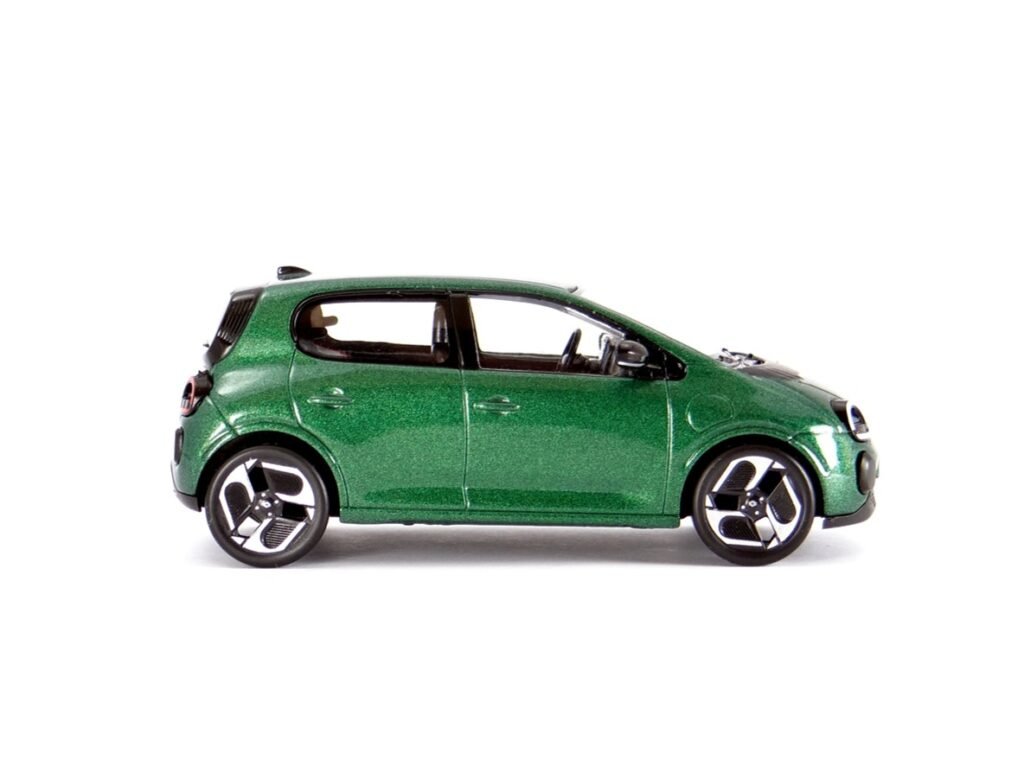
Since the Renault Twingo E-Tech is intended to be the entry-level electric model in the manufacturer’s lineup, it will be available with only one powertrain option: a 27.5 kWh battery paired with an 82 hp motor. With this setup, the car reaches a top speed of 130 km/h and accelerates to 100 km/h in 12.1 seconds. The WLTP range is rated at 263 km. This isn’t much, but Renault has taken a very pragmatic approach. After all, the Twingo is just a city car, and in urban areas, no one really needs a longer range. Those who want to cover longer distances will need to choose another vehicle from the brand’s lineup.
Renault wants to prove with the Twingo E-Tech, that it knows how to make small, reasonably priced EVs. With a starting price below 20.000 euros, it will be one of the cheapest electric models on the market. The competition in this sector isn’t particularly big yet, but it will grow very fast. The oncoming wave of cheap Chinese cars that is likely to fill European streets certainly poses the biggest threat to established brands. That’s why the French had to act fast. According to Renault, this is the fastest-developed model in the company’s history — the design process reportedly took only 100 weeks.
Renault did everything it could to encourage buyers to choose its offering. The car is greatly endearing, but is that enough? The potential for success is enormous, but for many, an electric powertrain is still unacceptable. They’d much prefer an ICE, but this is unlikely be offered.
Serial production will begin next year at the Slovenian factory in Novo Mesto. That’s when we’ll find out whether the Twingo, this time electric, will once again charm Europe.
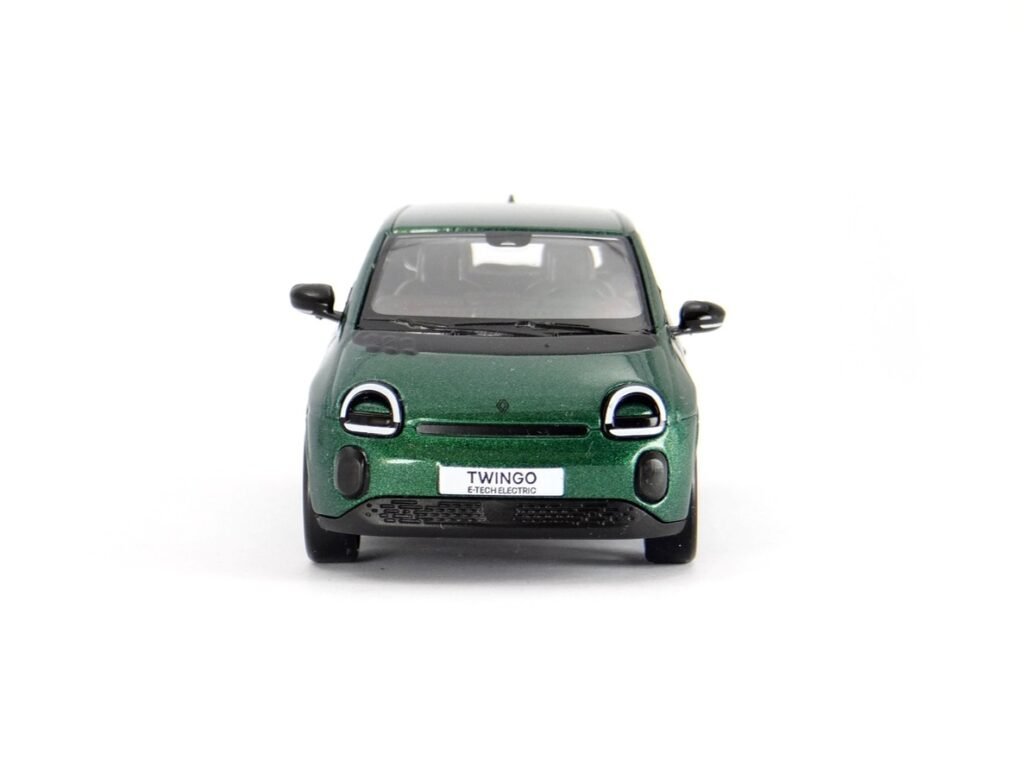
About the miniature – Renault Twingo E-Tech
It seems to be a new custom lately. When Renault officially presents a new model, the same day its miniature appears on the Renault Originals website. The Renault Twingo E-Tech certainly followed this pattern. So, on 6th November, two 1/43 scale models done by Norev went on sale: an Absolute green in the higher Techno trim and an Absolute red in the base Evolution trim.
That same day, I went on the website to buy the new release. However, it turned out that the red model was already unavailable on the very first day of sales! As I wanted to buy both, I had to wait a few days for them to restock.
Finally, the models arrived. They come from Norev’s new casts with improved wing mirrors, so their appearance is a lot better. As usual, you can’t complain about the paintwork — it’s perfect on both models.
My clear favourite here is the green Twingo. That shade perfectly fits the shape of the car and certainly makes it pop! It really reminds me of a little frog, but that’s no bad thing – it looks cute!
Of course, there are a few flaws here that are typical of many Norev releases, such as: plastic tires, lack of brake detailing, black interior, and the absence of a rear-view mirror. Though surprisingly, it doesn’t bother me too much here.
I’m eagerly waiting for the Renault Twingo E-Tech in 1:18 scale, but in the meantime take a look at the photos of the 1:43 scale models! As always, please follow MiniAutomobile on Instagram and Facebook!
